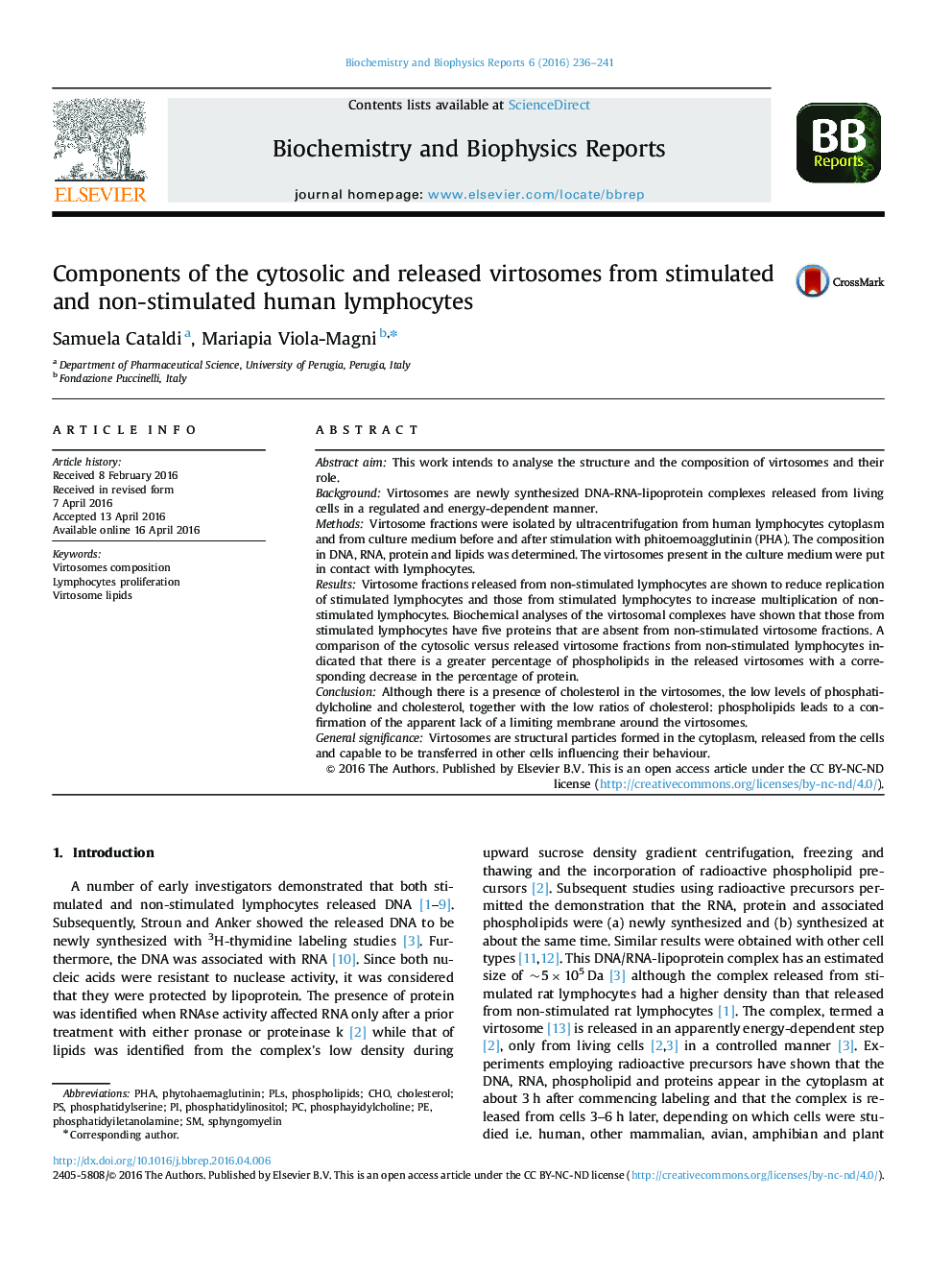| Article ID | Journal | Published Year | Pages | File Type |
|---|---|---|---|---|
| 1941686 | Biochemistry and Biophysics Reports | 2016 | 6 Pages |
•Virtosomes are particles formed in the cytoplasm and released in the medium.•Released virtosomes are transferred in other cells modifying their function.•Virtosomes contain DNA, RNA, protein and lipids.•The lipids composition is characterized by high level of sphingomyelin and low level of cholesterol.•Virtosomes does not present a cell membrane.
Abstract aimThis work intends to analyse the structure and the composition of virtosomes and their role.BackgroundVirtosomes are newly synthesized DNA-RNA-lipoprotein complexes released from living cells in a regulated and energy-dependent manner.MethodsVirtosome fractions were isolated by ultracentrifugation from human lymphocytes cytoplasm and from culture medium before and after stimulation with phitoemoagglutinin (PHA). The composition in DNA, RNA, protein and lipids was determined. The virtosomes present in the culture medium were put in contact with lymphocytes.ResultsVirtosome fractions released from non-stimulated lymphocytes are shown to reduce replication of stimulated lymphocytes and those from stimulated lymphocytes to increase multiplication of non-stimulated lymphocytes. Biochemical analyses of the virtosomal complexes have shown that those from stimulated lymphocytes have five proteins that are absent from non-stimulated virtosome fractions. A comparison of the cytosolic versus released virtosome fractions from non-stimulated lymphocytes indicated that there is a greater percentage of phospholipids in the released virtosomes with a corresponding decrease in the percentage of protein.ConclusionAlthough there is a presence of cholesterol in the virtosomes, the low levels of phosphatidylcholine and cholesterol, together with the low ratios of cholesterol: phospholipids leads to a confirmation of the apparent lack of a limiting membrane around the virtosomes.General significanceVirtosomes are structural particles formed in the cytoplasm, released from the cells and capable to be transferred in other cells influencing their behaviour.
Graphical abstractFigure optionsDownload full-size imageDownload as PowerPoint slide
